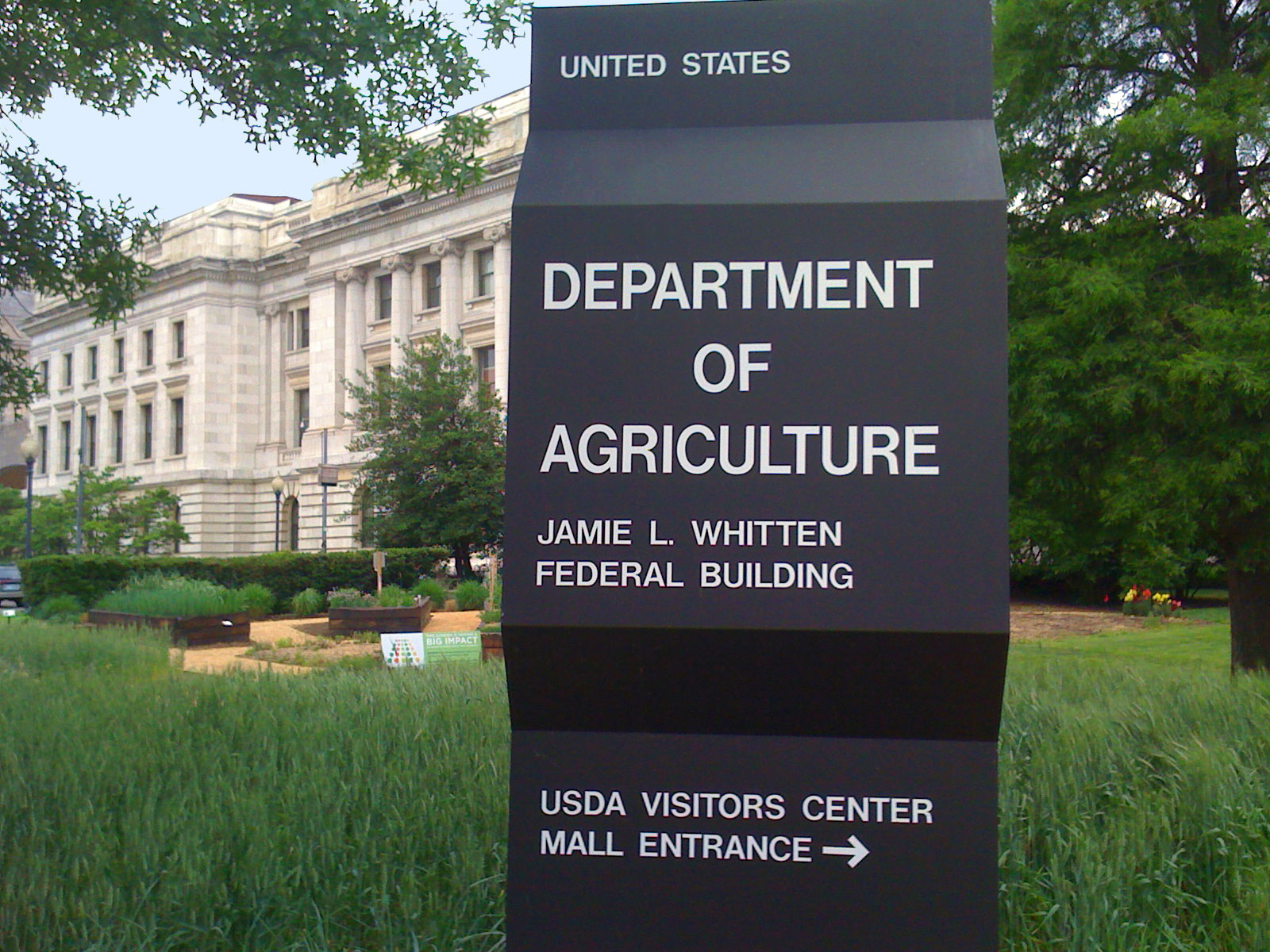Once every two weeks, janitors at the United States Department of Agriculture break open a new pallet of paper towels they’ll use to fill dispensers in 100 bathrooms scattered along seven miles of corridors throughout the USDA complex in Washington D.C. That’s at least two tons of paper a month—more than 24 tons a year. It’s no wonder that waste reduction is the USDA’s highest priority, when it comes to going green.
As the largest building on the National Mall and “the seat of Department leadership,” USDA officials want their headquarters to be “a model facility for others wishing to implement waste reduction and waste minimization programs,” according to the Waste Minimization Plan.
Although much of the USDA’s plan involves recycling, officials took a major step toward stopping waste at its source by installing 20 high-speed, energy-efficient hand dryers in restrooms throughout the USDA headquarters; the USDA reports seeing an immediate 50% reduction in the use of paper towels.
The high-speed energy-efficient dryers also deliver a 95% cost savings compared to paper towels and have a pay back period of less than one year. A Peer reviewed Life Cycle Assessment confirmed that high-speed dryers reduce the carbon footprint of hand drying by 50-70% when compared to both traditional hand dryers and 100% recycled paper towels.
All told, officials say the high-speed hand dryers are:
- Eliminating more than five tons of paper towel waste per year
- Lowering the cost of purchasing paper towels
- Reducing paper towel disposal fees
- Improving bathroom hygiene; there are now fewer wet paper towels trapping germs and overflowing onto the bathroom floor
The agency has targeted the biggest contributors to its waste stream, and high on the list is janitorial services and the extraordinary costs of supplying restrooms with paper towels; in fact, paper towels cost more than any other restroom supply or product.
 By dramatically reducing paper towel waste, janitors are now concentrating on tasks more critical than simply taking out the trash; janitors are now more focused and efficient because they are hauling away less paper towel trash—five million pounds less.
By dramatically reducing paper towel waste, janitors are now concentrating on tasks more critical than simply taking out the trash; janitors are now more focused and efficient because they are hauling away less paper towel trash—five million pounds less.
Overall, combined efforts of the Green Team and all USDA employees have reduced trash pick-ups at the complex from five to four per week, according to the most updated information posted on the USDA Web site.
By reducing the total number of “Trash Picks,” the USDA has:
- Eliminated 52 round trips to the USDA headquarters by big-rig diesel pick-up trucks
- Reduced the amount of diesel fuel being used
- Lowered airborne emissions of diesel exhaust and particulate pollution
- Cut greenhouse gas emissions from trucks traveling to the dump
- Reduced the amount of trash going into local landfills
- Saved $30,000 in dumpster fees
Removing paper towels and rolling out high-speed hand dryers remains a growing part of the agriculture department’s overall waste reduction program. Officials plan to continue installing XLERATOR hand dryers throughout USDA headquarters as they move ever closer to paper-free restrooms. +
Related Stories
Legislation | Nov 23, 2022
7 ways the Inflation Reduction Act will impact the building sector
HOK’s Anica Landreneau and Stephanie Miller and Smart Surfaces Coalition’s Greg Kats reveal multiple ways the IRA will benefit the built environment.
Multifamily Housing | Nov 22, 2022
10 compelling multifamily developments debut in 2022
A smart home tech-focused apartment complex in North Phoenix, Ariz., and a factory conversion to lofts in St. Louis highlight the notable multifamily developments to debut recently.
Digital Twin | Nov 21, 2022
An inside look at the airport industry's plan to develop a digital twin guidebook
Zoë Fisher, AIA explores how design strategies are changing the way we deliver and design projects in the post-pandemic world.
Healthcare Facilities | Nov 17, 2022
Repetitive, hotel-like design gives wings to rehab hospital chain’s rapid growth
The prototype design for Everest Rehabilitation Hospitals had to be universal enough so it could be replicated to accommodate Everest’s expansion strategy.
Industrial Facilities | Nov 16, 2022
Industrial building sector construction, while healthy, might also be flattening
For all the hoopla about the ecommerce boom and “last mile” order fulfillment driving demand for more warehouse and manufacturing space, construction of industrial buildings actually declined over the past five years, albeit marginally by 2.1% to $27.3 billion in 2022, according to estimates by IBIS World. Still, construction in this sector remains buzzy.
Wood | Nov 16, 2022
5 steps to using mass timber in multifamily housing
A design-assist approach can provide the most effective delivery method for multifamily housing projects using mass timber as the primary building element.
Giants 400 | Nov 14, 2022
Top 55 Airport Terminal Architecture + AE Firms for 2022
Gensler, PGAL, Corgan, and HOK top the ranking of the nation's largest airport terminal architecture and architecture/engineering (AE) firms for 2022, as reported in Building Design+Construction's 2022 Giants 400 Report.
Giants 400 | Nov 14, 2022
4 emerging trends from BD+C's 2022 Giants 400 Report
Regenerative design, cognitive health, and jobsite robotics highlight the top trends from the 519 design and construction firms that participated in BD+C's 2022 Giants 400 Report.
Green | Nov 13, 2022
NREL report: Using photovoltaic modules with longer lifetimes is a better option than recycling
A new report from the U.S. National Renewable Energy Laboratory (NREL) says PV module lifetime extensions should be prioritized over closed-loop recycling to reduce demand for new materials.
Green | Nov 13, 2022
Global building emissions reached record levels in 2021
Carbon-dioxide emissions from building construction and operations hit an all-time high in 2021, according to the most recent data compiled by the Global Alliance for Buildings and Construction.

















